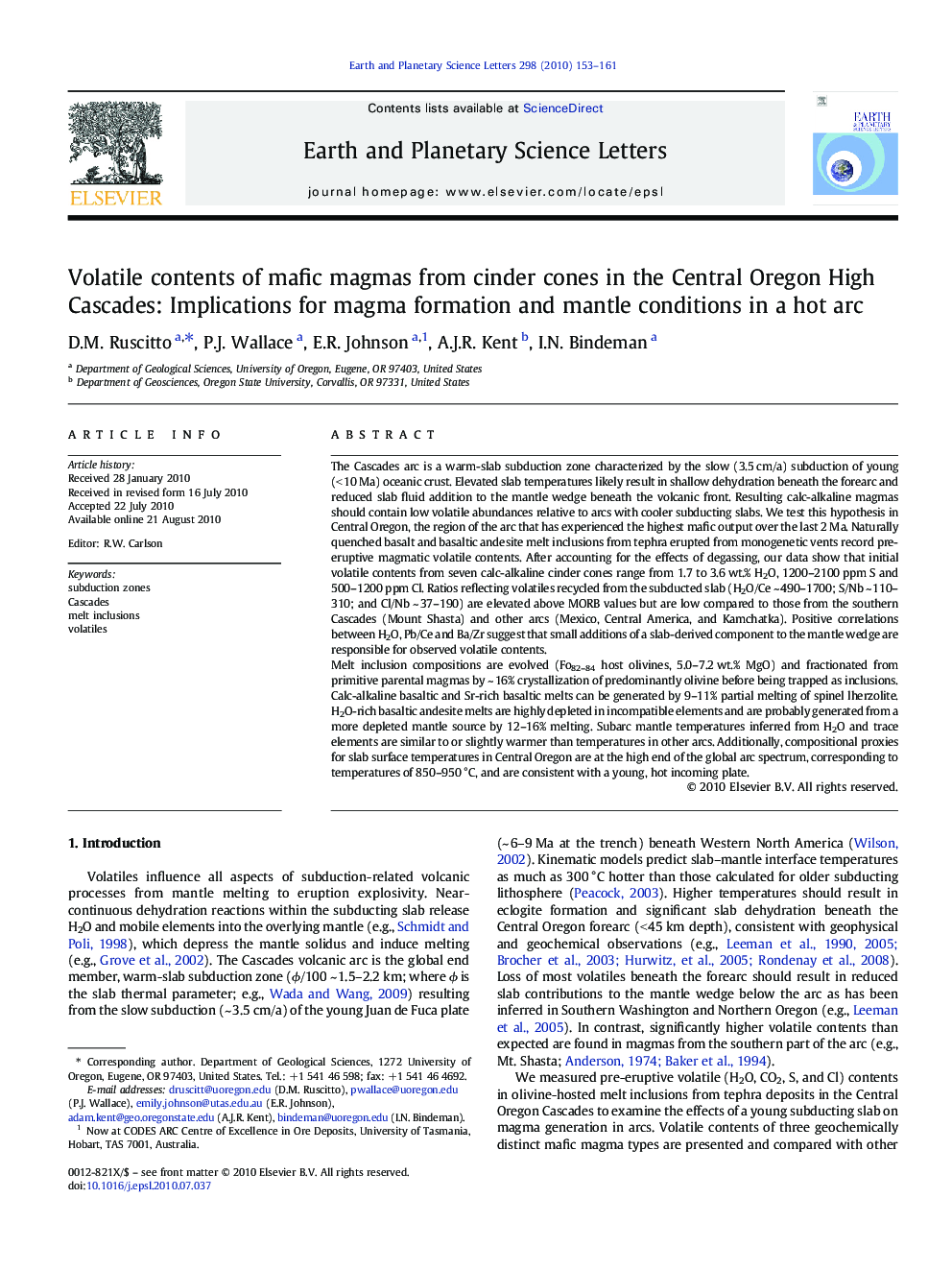| کد مقاله | کد نشریه | سال انتشار | مقاله انگلیسی | نسخه تمام متن |
|---|---|---|---|---|
| 4678257 | 1634844 | 2010 | 9 صفحه PDF | دانلود رایگان |

The Cascades arc is a warm-slab subduction zone characterized by the slow (3.5 cm/a) subduction of young (< 10 Ma) oceanic crust. Elevated slab temperatures likely result in shallow dehydration beneath the forearc and reduced slab fluid addition to the mantle wedge beneath the volcanic front. Resulting calc-alkaline magmas should contain low volatile abundances relative to arcs with cooler subducting slabs. We test this hypothesis in Central Oregon, the region of the arc that has experienced the highest mafic output over the last 2 Ma. Naturally quenched basalt and basaltic andesite melt inclusions from tephra erupted from monogenetic vents record pre-eruptive magmatic volatile contents. After accounting for the effects of degassing, our data show that initial volatile contents from seven calc-alkaline cinder cones range from 1.7 to 3.6 wt.% H2O, 1200–2100 ppm S and 500–1200 ppm Cl. Ratios reflecting volatiles recycled from the subducted slab (H2O/Ce ~ 490–1700; S/Nb ~ 110–310; and Cl/Nb ~ 37–190) are elevated above MORB values but are low compared to those from the southern Cascades (Mount Shasta) and other arcs (Mexico, Central America, and Kamchatka). Positive correlations between H2O, Pb/Ce and Ba/Zr suggest that small additions of a slab-derived component to the mantle wedge are responsible for observed volatile contents.Melt inclusion compositions are evolved (Fo82–84 host olivines, 5.0–7.2 wt.% MgO) and fractionated from primitive parental magmas by ~ 16% crystallization of predominantly olivine before being trapped as inclusions. Calc-alkaline basaltic and Sr-rich basaltic melts can be generated by 9–11% partial melting of spinel lherzolite. H2O-rich basaltic andesite melts are highly depleted in incompatible elements and are probably generated from a more depleted mantle source by 12–16% melting. Subarc mantle temperatures inferred from H2O and trace elements are similar to or slightly warmer than temperatures in other arcs. Additionally, compositional proxies for slab surface temperatures in Central Oregon are at the high end of the global arc spectrum, corresponding to temperatures of 850–950 °C, and are consistent with a young, hot incoming plate.
Journal: Earth and Planetary Science Letters - Volume 298, Issues 1–2, 15 September 2010, Pages 153–161